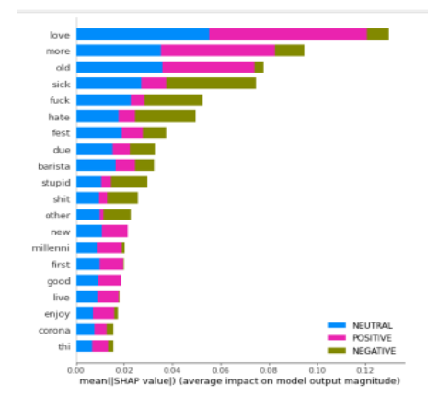


Indian Journal of Science and Technology
Year: 2022, Volume: 15, Issue: 30, Pages: 1484-1494
Original Article
S Hemdan Hamed1*, Hazem Elbakry1, Haitham Elghareeb1, Sara Elhishi1
1Department of Information Systems, Faculty of Computers and Information, Mansoura University, Mansoura, Egypt
*Corresponding author
Email: [email protected]
Received Date:17 February 2022, Accepted Date:14 July 2022, Published Date:09 August 2022
Background: To offer a transparent decision support system able of classifying tweets’ sentiment into positive, neutral, and negative sentiment and explains the prediction result by XAI techniques Methods: We started by data preprocessing phase. For data representation, we used TF-IDF, and we applied four machine-learning algorithms including Naive Bayes, random forest, logistic regression, and support vector machine, as well as four deep learning RNN, LSTM, GRU, and Bi-directional RNN. To raise model trust, we used LIME and SHAP to improve model explainability. Findings: The empirical findings show that the Logistic Regression model and SVM model using the TF-IDF feature extraction approach have the best performance when compared to the other models, with an average accuracy of 84% and 86% respectively. The data balancing step pushed the accuracy of the Random Forest model from 47% to 73%, other models slightly changed. The performance of deep learning models was better than traditional machine learning models, LSTM and GRU achieve approximately 78%, and Bi-directional RNN achieve 79% for dataset 2. Novelty and applications: we propose a highly accurate approach for SA which has been tested on two datasets. Also, to increase trust in model prediction, we explain the predicted sentiment.
Keywords: Explainable Artificial Intelligent (XAI); Sentiment Analysis; Covid19; Deep Learning; machine learning
© 2022 Hamed et al. This is an open-access article distributed under the terms of the Creative Commons Attribution License, which permits unrestricted use, distribution, and reproduction in any medium, provided the original author and source are credited.
Published By Indian Society for Education and Environment (iSee)
Subscribe now for latest articles and news.